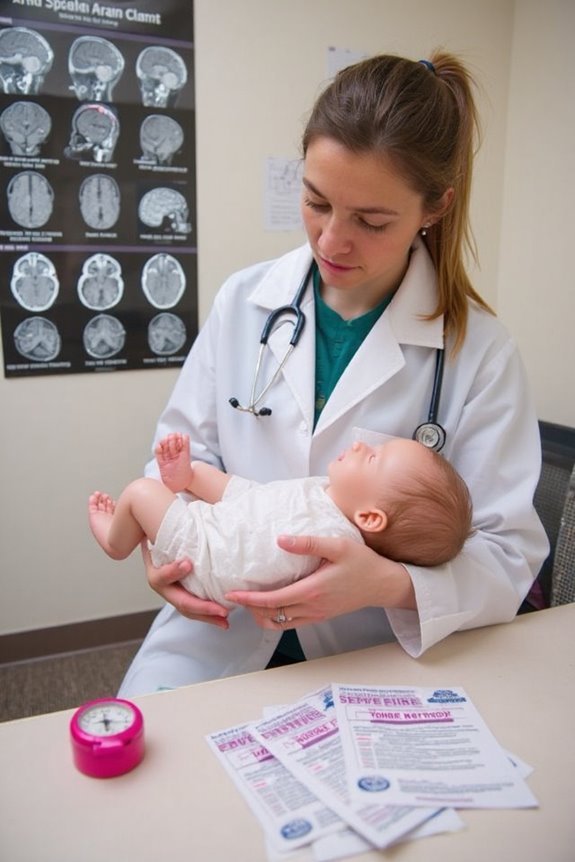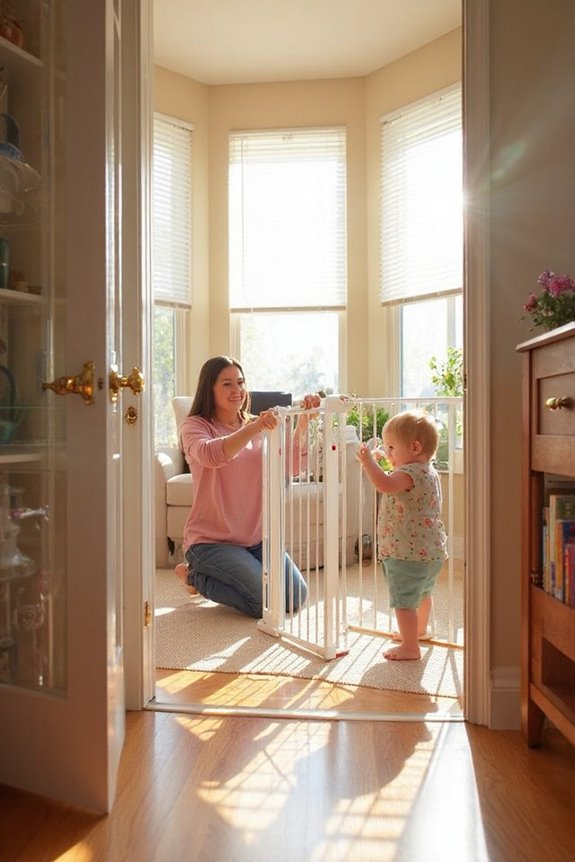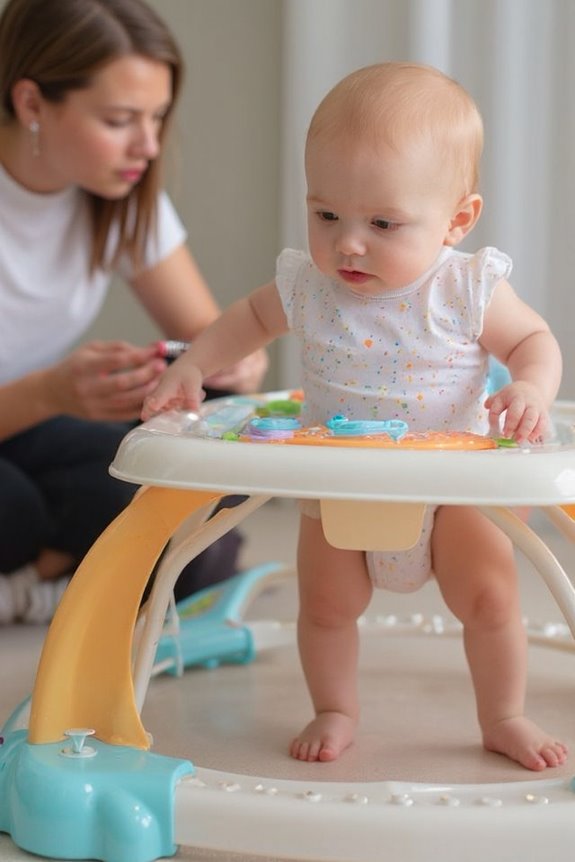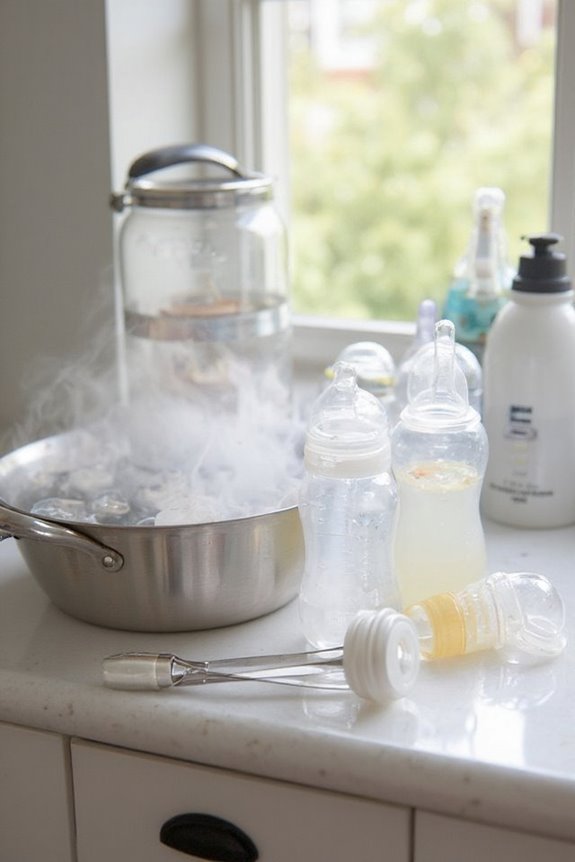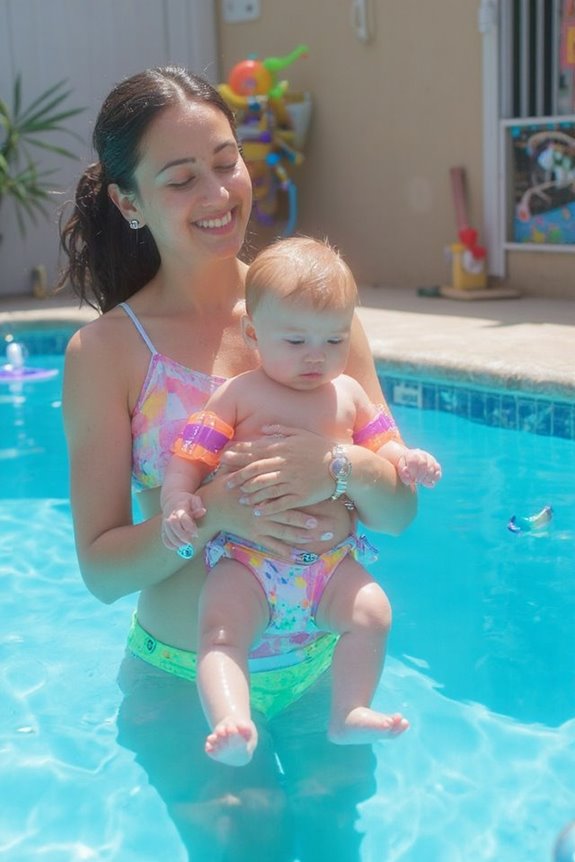Shaken Baby Syndrome occurs when an infant is violently shaken, causing traumatic brain injury. It typically happens when caregivers lose control during stressful situations, particularly when dealing with inconsolable crying. Just 5 seconds of shaking can cause permanent damage due to infants’ weak neck muscles. Warning signs include extreme irritability, lethargy, poor feeding, breathing difficulties, and seizures. While diagnosis is challenging, medical intervention is essential. Understanding prevention strategies can save a child’s life.
Key Takeaways
- Shaken Baby Syndrome occurs when infants under 2 years old are violently shaken, causing brain damage and potential death.
- Common symptoms include extreme irritability, poor feeding, breathing difficulties, unusual muscle tone, and potentially seizures.
- Diagnosis requires medical imaging like CT scans and MRIs to detect brain bleeding, along with eye exams for retinal hemorrhages.
- Long-term effects include cognitive impairments, developmental delays, learning disabilities, and physical challenges requiring extensive rehabilitation.
- Prevention strategies involve understanding infant crying patterns, taking breaks when frustrated, and seeking support when feeling overwhelmed.
What Is Shaken Baby Syndrome and How Does It Occur?
Tragedy often strikes in moments of frustration. When a caregiver violently shakes an infant, usually due to crying that won’t stop, they can cause what doctors call Shaken Baby Syndrome (SBS).
Causes Overview
- SBS results from violent shaking of a child under 2 years old
- Just 5 seconds of shaking can cause permanent damage
- Occurs when caregivers lose control during stressful situations
Injury Mechanism
- The baby’s soft brain bounces inside the skull
- Large veins tear, causing bleeding and swelling
- The child’s weak neck muscles can’t protect against the force
- Damage worsens if the baby hits a surface after shaking
I can’t stress enough that this severe abuse is completely preventable with proper understanding and coping techniques.
Recognizing the Warning Signs and Symptoms
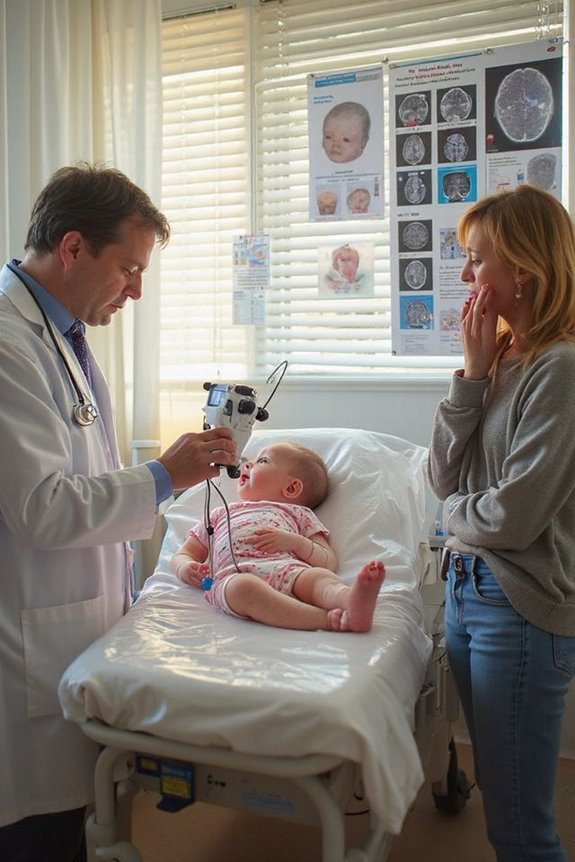
When a baby has been subjected to violent shaking, the symptoms may not always be immediately obvious to caregivers or even medical professionals. Symptom awareness is essential for early intervention.
Immediate Warning Signs:
- Extreme irritability or lethargy
- Poor feeding or vomiting
- Difficulty breathing
- No smiling or vocalization
- Unusual stiffness or floppiness
Severe Indicators:
- Seizures or unconsciousness
- Dilated or uneven pupils
- Head swelling
- Paralysis
Many injuries remain invisible externally, including brain bleeding, retinal hemorrhages, and spinal damage. Some warning signs might develop gradually or appear later in life.
If you notice these symptoms, seek emergency medical help immediately. Recognizing these signs early can be life-saving for an injured infant.
Diagnosis and Medical Intervention
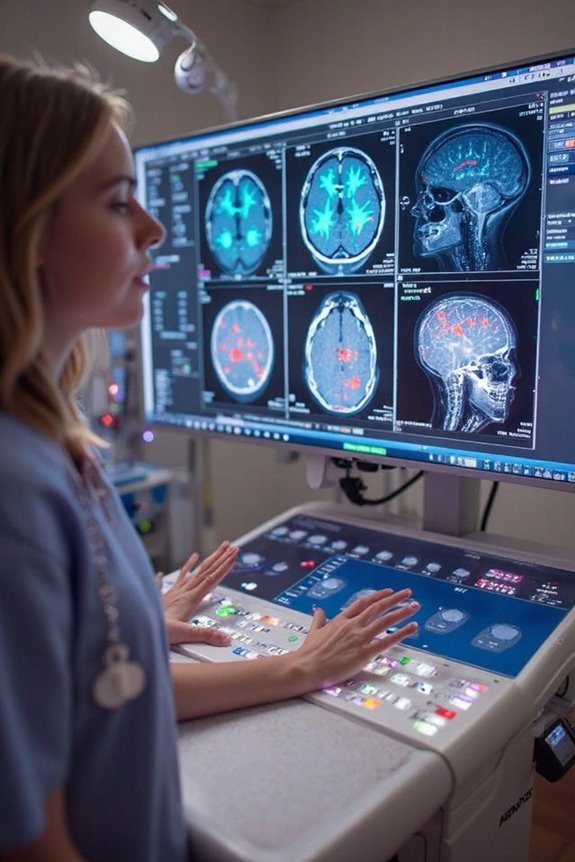
Once symptoms appear, accurate diagnosis becomes the next vital step in addressing Shaken Baby Syndrome (SBS). Medical professionals face significant diagnostic challenges as internal injuries often lack external signs.
The diagnosis process typically includes:
- CT scans and MRIs to detect brain swelling and bleeding
- Ophthalmological exams to identify retinal hemorrhages
- X-rays and skeletal surveys to check for fractures
These imaging techniques are essential for detecting the triad of symptoms often present in SBS cases. When SBS is suspected, emergency intervention follows immediately:
- Stabilization of life-threatening conditions
- Collaborative assessment with child abuse specialists
- thorough documentation of injuries
- Implementation of supportive care measures
The variability in symptoms can complicate diagnosis, making a team approach essential for accurate identification and appropriate treatment of this serious condition.
Long-Term Effects and Recovery Prospects

Survivors of Shaken Baby Syndrome (SBS) face lifelong challenges that extend far beyond the initial injury. The neurological damage often results in severe cognitive challenges including learning disabilities, memory problems, and developmental delays that persist throughout their lives.
Recovery typically requires extensive physical rehabilitation for:
- Mobility issues related to cerebral palsy
- Vision therapy for retinal damage
- Seizure management
The economic impact is staggering—approximately $5.7 million per SBS death and $13.5 billion annually in societal costs. Families often experience:
- Financial strain from ongoing medical expenses
- Social isolation
- Significant psychological stress
While some children show improvement with intensive therapy, many require lifelong care and support. Early intervention programs offer the best chance for maximizing recovery potential, though complete recovery is rare.
Prevention Strategies for Parents and Caregivers
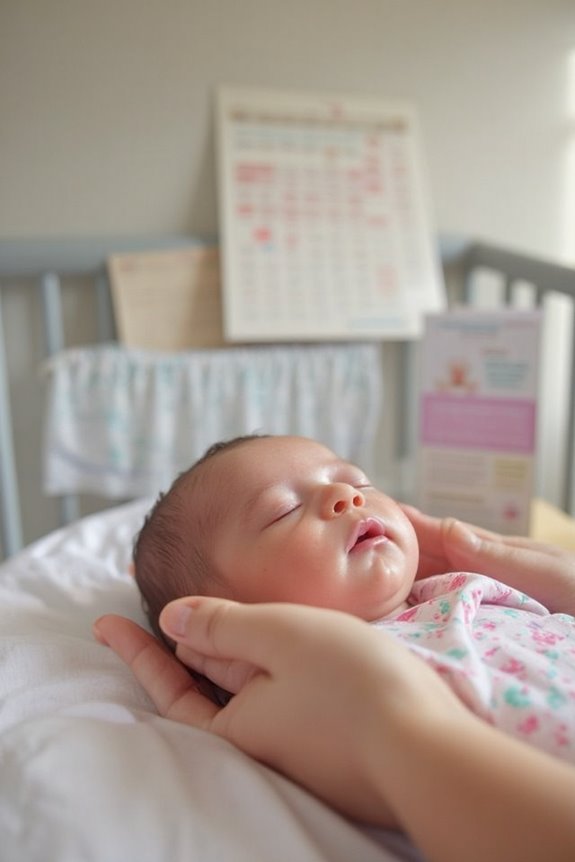
Preventing Shaken Baby Syndrome requires a thorough approach that all caregivers must understand and implement consistently. Caregiver education forms the foundation of prevention, focusing on safe handling techniques and understanding normal crying patterns.
When feeling overwhelmed:
- Place the baby in a safe sleep environment and take a short break
- Practice deep breathing or listen to calming music
- Call a trusted person from your support network
Community support plays an essential role in prevention. This includes:
- Parent support groups where experiences can be shared
- Educational workshops about abusive head trauma
- Workplace policies that acknowledge the challenges of infant care
Remember that swaddling, gentle rocking, and skin-to-skin contact can help soothe a crying baby. Never hesitate to seek help when feeling frustrated—it’s a sign of strength, not weakness.
Frequently Asked Questions
Can Normal Play or Bouncing Cause Shaken Baby Syndrome?
I’ve found that 99% of SBS cases stem from violent abuse, not normal activities. No, gentle bouncing and normal play are completely safe for babies. Play safety means understanding that only extreme force causes Shaken Baby Syndrome.
Who Are the Most Common Perpetrators of This Form of Abuse?
I find that primary caregivers, often fathers or mother’s boyfriends, are the most common perpetrators. Family dynamics and caregiver stress play significant roles, with female babysitters also representing a notable percentage of cases.
How Quickly Do Symptoms Appear After a Shaking Incident?
Like a storm building on the horizon, symptom onset varies drastically. I’ve seen symptoms appear immediately after shaking, especially with longer shaking duration, while other signs may develop gradually over hours or days.
Can Older Children Develop Shaken Baby Syndrome?
While I typically associate SBS with infants, older children are less vulnerable due to developmental factors. Their stronger neck muscles and more developed brains make them less susceptible to the specific injuries defining classic SBS.
What Legal Consequences Exist for Those Who Cause SBS?
I’ll tell you the harsh reality: accused, convicted, and punished. Legal ramifications include prison time, heavy fines, and lost custody. Case studies show defendants facing charges from child abuse to murder, depending on injury severity.

